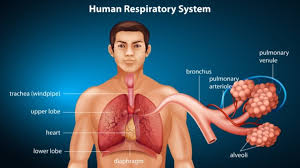Embarking on the journey through the intricacies of respiration, one delves into the fundamental biochemical processes underpinning life itself. At its core, respiration orchestrates a symphony of reactions within the mitochondria of cells, transforming glucose and oxygen into energy, carbon dioxide, and water. This cellular ballet, often termed aerobic respiration, fuels the myriad activities sustaining living organisms. From the rhythmic pulsations of muscle contractions to the intricate choreography of protein synthesis, every facet of cellular function draws upon the energy reservoirs generated through respiration.
Let us embark on this exploration, unraveling the mysteries of life’s energetic dance.
Definition of Respiration:
- Respiration encompasses a series of biochemical reactions occurring in the mitochondria of cells, converting glucose and oxygen into carbon dioxide, water, and energy in the form of adenosine triphosphate (ATP). This process, often referred to as cellular respiration, serves as the primary means by which cells extract energy for various functions.
- Description: Respiration is the set of chemical reactions occurring in all living cells that release energy from glucose.
- Process: Involves the breakdown of glucose to release energy for cellular functions.
Uses of Energy in Living Organisms:
- Muscle Contraction:
- Energy derived from respiration powers the molecular mechanisms involved in muscle contraction, enabling movement and physical activities.
- Protein Synthesis:
- The synthesis of proteins, crucial for cellular structure, enzymes, and other biological functions, requires energy supplied by respiration.
- Cell Division:
- The energy generated supports the complex processes of cell division, ensuring the growth and reproduction of cells.
- Active Transport:
- Cellular transport mechanisms, including active transport across cell membranes, rely on ATP produced through respiration.
- Growth:
- Energy facilitates the growth and development of organisms, allowing them to increase in size and complexity.
- Passage of Electrical Impulses:
- The transmission of nerve signals, vital for communication within the nervous system, relies on energy produced through respiration.
- Maintenance of Body Temperature:
- Cellular processes involved in maintaining a constant body temperature, essential for optimal enzyme function, are fueled by the energy released during respiration.
Effect of Temperature on Respiration in Yeast:
- Investigation:
- When studying the effect of temperature on yeast respiration, researchers often observe the rate of carbon dioxide production or the consumption of oxygen.
- Observation:
- Optimal temperatures generally increase the rate of respiration, as enzymes involved in the process exhibit enhanced activity. However, excessively high temperatures may lead to enzyme denaturation, reducing the rate of respiration.
- Importance:
- Understanding temperature effects on yeast respiration is not only relevant in a laboratory setting but also provides insights into environmental factors influencing metabolic processes in living organisms.
In summary, respiration is a dynamic cellular process that not only produces energy but also plays a pivotal role in sustaining various life processes, from basic cell functions to the complex activities of multicellular organisms. Investigating its intricacies, including temperature effects in organisms like yeast, contributes to a comprehensive understanding of bioenergetics.Understanding respiration as a fundamental process, its energy utilisation across various cellular activities, and the influence of temperature on respiration in specific organisms contributes to a comprehensive grasp of cellular functions.
GCSE Biology – Respiration #21
Aerobic respiration
Aerobic respiration is a process that releases a substantial amount of energy through the breakdown of glucose in the presence of oxygen, occurring in cells to fuel various cellular activities.
Word equation: Glucose + Oxygen → Carbon Dioxide + Water + Energy
Balanced chemical equation: C6H12O6 + 6O2 → 6CO2 + 6H2O + Energy
Aerobic Respiration – GCSE Biology (9-1)
Anaerobic respiration
Anaerobic respiration is the release of a relatively small amount of energy through the breakdown of glucose without the use of oxygen.
- Word equation for anaerobic respiration in humans: Glucose → Lactic Acid + Energy
- Word equation for anaerobic respiration in yeast: Glucose → Ethanol + Carbon Dioxide + Energy
Lactic acid builds up in muscles and blood during vigorous exercise due to insufficient oxygen supply for complete aerobic respiration. This leads to anaerobic respiration, resulting in the accumulation of lactic acid, causing muscle fatigue and an ‘oxygen debt.’
- Removal of oxygen debt after exercise:
- Fast heart rate transports lactic acid in the blood from muscles to the liver.
- Deeper and faster breathing supplies oxygen for the breakdown of lactic acid in the liver.
Anaerobic Respiration in the Muscles | Physiology | Biology | FuseSchool



